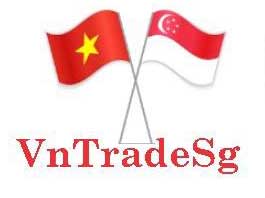According to Vietnam Construction Securities Joint Stock Company (CSI), the energy crisis and the prolonged conflict between Russia and Ukraine have caused the world to experience a food crisis. On September 30, the International Monetary Fund (IMF) said that the conflict disrupted grain and fertiliser exports and led to the worst global food crisis since 2008.
The latest IMF study estimated that the 48 most food-deprived countries would have to spend an additional 9 billion USD on imports in 2022 and 2023 as food and fertiliser prices have surged unexpectedly due to instability in Ukraine. The IMF also called for the lifting of food export bans as well as other protectionist measures.
Agribank Securities Joint Stock Corp (Agriseco) said before curbing rice exports, India had measures to limit exports of wheat and sugar to ensure its food security. In Europe, Russia and Ukraine had to restrict wheat exports and other agricultural products due to the conflict.
Many other countries are also moving towards this trend, especially since food supplies and stocks in many countries have been falling to low levels for many years.
According to Agriseco, the global food price index increased sharply in 2021 and the first half of 2022. However, during the same period, rice prices declined thanks to large inventories in rice-exporting countries.
However, India’s recent curbs on rice exports and the extreme weather in China and many regions worldwide would shortly push global rice prices. That would significantly impact rice exporting countries, including Vietnam, Agriseco said.
Since India, the world’s biggest rice exporter, banned exports of broken rice and slapped a 20% export tax on some non-basmati varieties, global rice prices have jumped more than 10%. Last month, the Food and Agriculture Organisation’s global rice price index rose 2.2% to hit an 18-month high, Reuters reported.
India now corners 37% of global trade. The industry’s insiders have said that any change in India’s rice supply to the world would strongly influence inventories and rice prices in other countries.
They said Vietnam would benefit directly from India’s export restriction policy, especially with broken rice products. In 2021, India exported 360 million USD worth of broken rice to China, accounting for the highest proportion with 38.6%. Thus, India’s ban on broken rice exports would offer a great opportunity for Vietnamese businesses.
The General Statistics Office showed that Vietnam exported over 5.4 million tonnes of rice in the first nine months of this year, earning a turnover of 2.64 billion USD, up 19.3% in volume and 9.3% in value year-on-year.
The Ministry of Agriculture and Rural Development said Vietnam is expected to export 6.5-6.7 million tonnes of rice in 2022 for 3.3 billion USD.
Amid the COVID-19 pandemic, the Russia-Ukraine conflict and high inflation, Vietnamese food enterprises have still increased their exports, achieving impressive business results.
Loc Troi Group, a leading provider of agricultural services and products in Vietnam, has so far received orders to export 400,000 tonnes of rice to the EU market in 2023, according to a company representative.
The new export contracts signed with EU partners will be completed in the second quarter of 2023, the representative said.
After the EU-Vietnam Free Trade Agreement took effect, the company was selected to ship the first batch of rice. To date, it has exported 30,000 tonnes of rice to the EU.
In September, 500 tonnes of “Com Vietnam” rice produced by the Loc Troi Group, for the first time, was put on the shelves of major retail supermarket chains in France. After that, French partners imported an additional 500 tonnes. As a result, all the 1,000 tonnes of rice were sold out within one month.
Through E.Leclerc Viry Châtillon, a hypermarket run by leading French retailer E.Leclerc, the “Com Vietnam” rice product reached French consumers and German and Dutch consumers.
Another big rice exporter – PAN Group, has announced its revenue and after-tax profit in the third quarter of 2022 at over 3.64 trillion VND and 140 billion VND, marking yearly increases of 43% and 92%, respectively.
This year, the firm is striving to earn a revenue of 14.3 trillion VND and an after-tax profit of 755 billion VND by the year-end, up 55% and 48% year-on-year./.
















